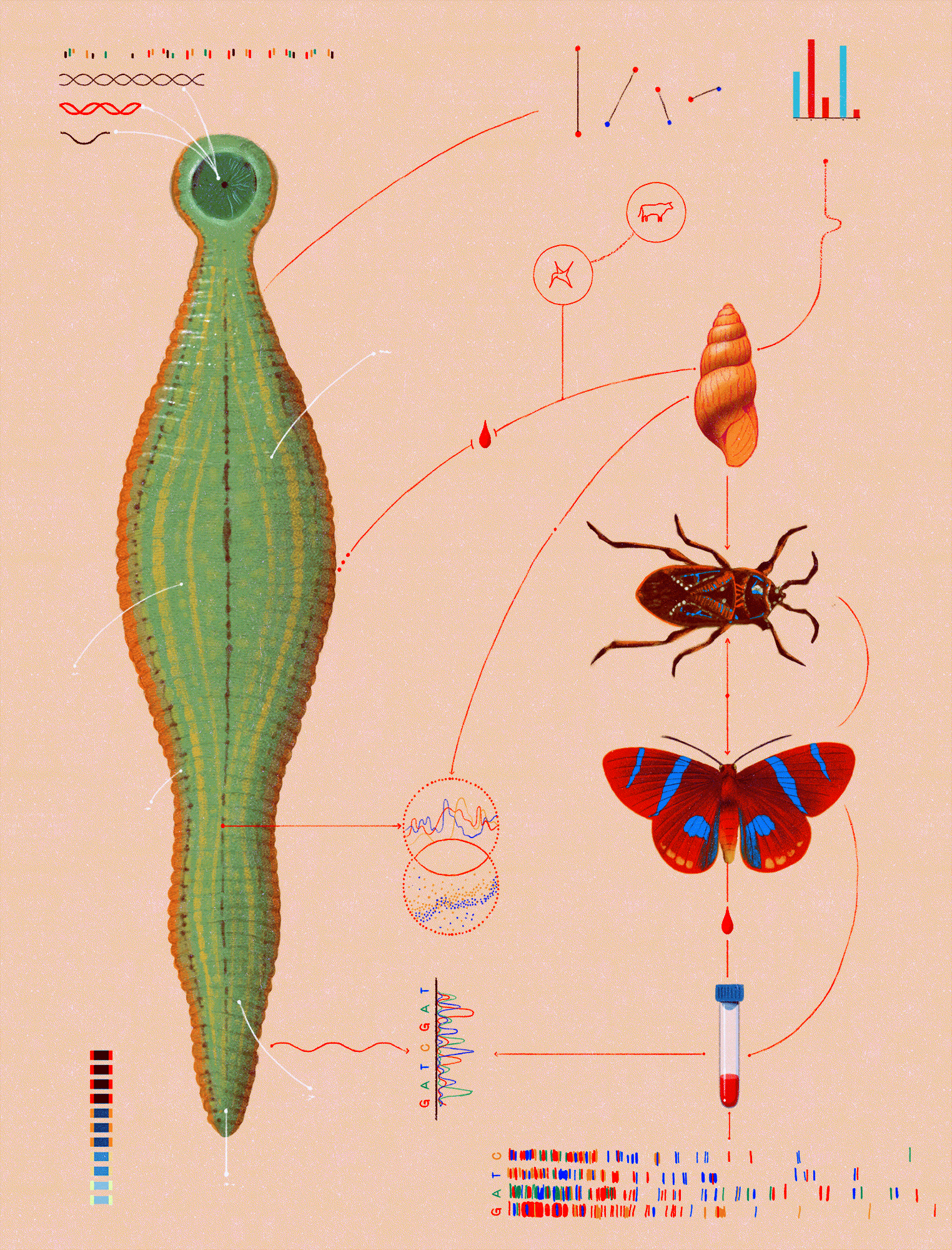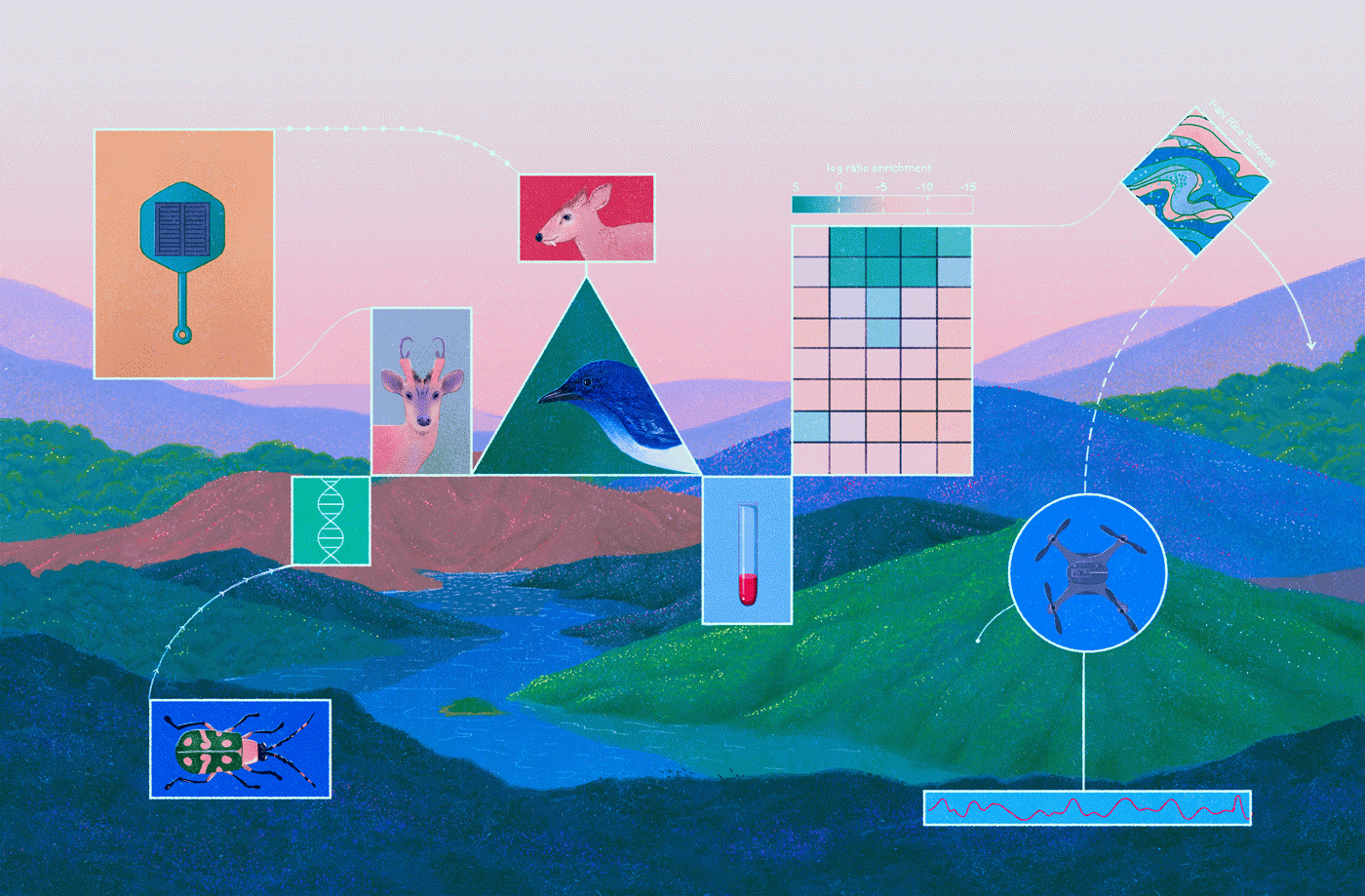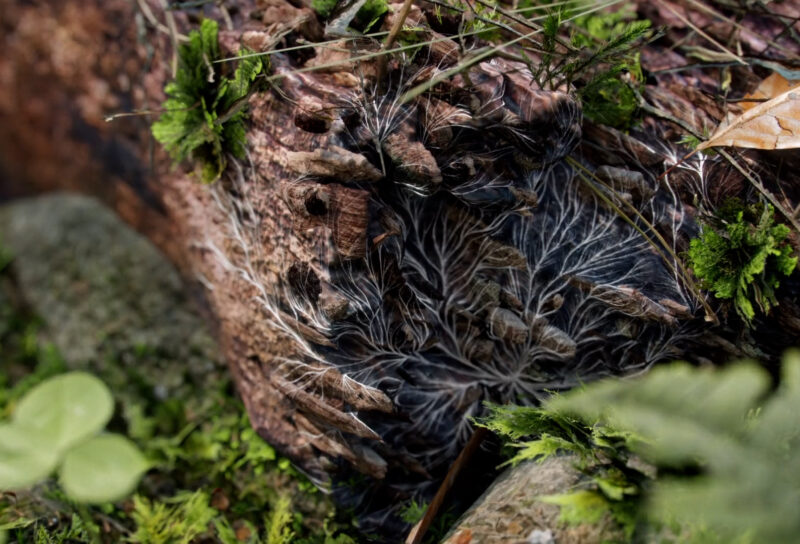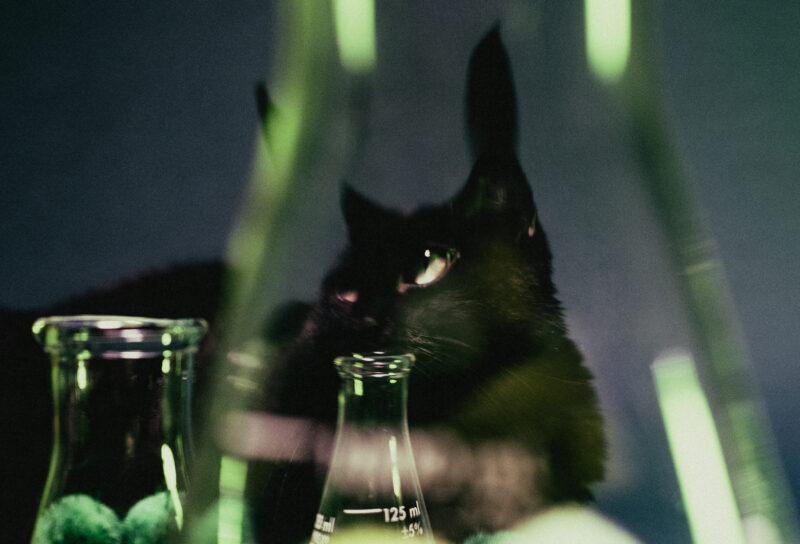Strolling through the Kunming Institute of Zoology (KIZ), nestled east of the Tibetan plateau and north of the Indochina tropics, I remember thinking that early spring is the perfect time to visit this part of China. A late morning breeze swept through the corridors. I smelled freshly steamed shrimps — an unusual choice of lunch in a landlocked metropolis better known for wild mushrooms and rice noodles.
“Boiled leeches,” my guide informed me. “Right? Never thought they would smell like that!”
In fact, as I would soon find out, these were 65°C sous vide leeches mixed with proteinase K. This wasn’t meal prep, but a way of breaking down the leeches’ cellular enzymes — the first of many steps in zoological DNA extraction. These small, wriggly things dine so omnivorously on everything in their extended ecosystem that their blood can offer an overview of its biodiversity.
At the time of my visit, Professor Doug Yu, principal investigator at KIZ, had just started using leeches to monitor ecosystem health in China’s national parks. This may sound fanciful, but in fact it is one of those biotechnological advances reshaping environmental monitoring at a scale and granularity previously deemed impossible. Leeches collect data where it’s hard to send human researchers — crucial reconnaissance that may help us attenuate the looming biodiversity crisis.
1. Monitoring Nature
Conservation biology has a monitoring problem: scientists estimate that there are 9 million species on Earth, yet we don’t know where to find most of them, not to mention how they are responding to climate change. We can’t bail out biodiversity if we don’t know who to save and where to find them.
Take the Ailaoshan Nature Reserve, for example — 420 square miles of forested watershed near the Sino-Myanmar border, a four-hour drive from Kunming. Extending from tropical rainforest to 10,000-foot alpine meadows, this Escheresque limestone warren was carved by eons of monsoons and is notoriously hard to traverse. The stakes for surveying it are high. Government officials need to assess the state of its biodiversity to establish whether it’s safe to allow timber extraction, farming, and more road construction. In 2021, a four-person geological survey disappeared in Ailaoshan. It took the government search team seven days, ten helicopter flights, and fifty drone flights to find the lost surveyors who, by then, had died of hypothermia.
This May, 195 nations, including the US, China, and the European Union, adopted the Kunming-Montreal Global Biodiversity Framework, which set out to conserve 30% of the world’s terrestrial surface by 2030, particularly areas with high biological diversity and ecosystem function. This goal is complicated by a scale problem. We could survey the biodiversity of a city park, maybe, with BioBlitz, citizen science and volunteer graduate students. But how could that possibly suffice to cover 30% of the planet, and how would anyone on the ground know if we had succeeded?
Some conservationists seem to have admitted defeat in light of the enormity of this challenge. They have retreated to developing proxies and indices. Temperature and precipitation approximate broad ecozones; birds and butterflies (“indicator species”) hint at local environmental conditions. These are reluctant methodological concessions with major shortcomings: climatic proxies do not capture biological interactions. Animals and plants strive in a web of competition, predation, and symbiosis. Surveyed forests could be vegetatively intact but devoid of animals (known as “empty forest syndrome”). Survey schemes pampering eye candy species leave out functionally important but underrepresented taxa: the creepers and crawlers that run the underworld, such as the dung-hoarding beetles, waste-composing termites, and water-filtering bristle worms. Informative biodiversity monitoring must tend to everything everywhere, with no species left behind.
That’s where Yu came in with his sous vide leeches, a breakthrough after two decades of incremental advances.

2. Biodiversity Soup
DNA barcoding was developed at the turn of the century by Canadian geneticist Paul Herbert (who, in classic Darwinian fashion, was a keen insect collector as a child). Herbert tested the idea that all animals, plants, and microbes have unique regions of their genome that could be used as species identifiers — comparable to the barcodes that catalog your favorite cereal brands. This was a revolutionary discovery: scientists can now tell a gypsy moth from a tiger moth without years of taxonomic apprenticeship, using only genomic sequencing. At the turn of the century, the work of biodiversity tallying started to move from museums to biotech companies.
In the past two decades, the cost of genomic sequencing has dropped about a million-fold — a speed that far surpassed the apocryphal Moore’s law. In the late 2000s, Yu, then a biology professor in the UK, was offered a position at the Kunming Institute of Zoology. He realized that, in China, it was cheaper to sequence the DNA barcodes of all the bugs on his windshield than to beg entomologists to identify them. “I seized the opportunity, in part because I could use their sequencer.” He also confessed: “No one needs me to train British ecologists. More ecologists in China would be useful though.” The developing world has more biodiversity and less trained people to study it.
A leech’s blood is a goulash of biodiversity.
For a proof of concept, Yu set up Malaise traps around Kunming — tent-like contraptions that collect flying insects in jars of ethanol. In a few weeks, the jars came back full of hundreds of insects, pickled like capers. In traditional surveys, these “bulk samples” would be deposited in local museums, cadging the entire entomology staff for another underpaid field day. Yu asked for expert opinion on some of the jars; for the rest, he scooped out the dead bugs en masse, ground them up, stewed them with proteinase K, and sent them straight through a sequencer.
Barcodes of each species were read out, and the results matched identifications provided by taxonomic experts. Yu showed that barcode-based biodiversity counting was not only accurate, but cheaper, faster, and less labor-intensive than traditional surveys. He called this new approach “biodiversity soup,” a chowder containing DNA barcodes from hundreds of species. The term has caught on, although his less epicurean colleagues preferred to use the phrase “meta-barcoding.”
The challenge to making this biodiversity soup is securing all the ingredients. Insects are easy to collect and cook. They come to light, fall into nets, drown in ethanol without premeditation. Vertebrates are different beasts. They hop, they trot, they flutter; they can’t be corralled into a soup can. To surveil communities of larger animals, Yu decided to recruit leeches.
Luckily, there are plenty of leeches.
3. Beware of Leeches
Yu chose the subtropical thicket of Mêdog, nurtured by the waterways of Brahmaputra Valley, as one of his main collection sites. On my visit there, I watched my driver navigate the landslide-prone dirt road. The ambience was misty — suffocatingly verdant — with a non-stop chorus of snowmelt rapids and serenading cicadas. We parked the Pajero in front of a road sign depicting a magnified, S-shaped annelid. I stepped out of the car to study both the Chinese and Tibetan scripts: Beware of Leeches.
This warning sign came a bit late for me. By then, dozens of thin, match-length rubber tubes were gyrating on my sneakers. One had snuck past my sock cuff and started sucking.
These leeches are abundant in southwest China and are quick to sense (and feast on) large vertebrates. They are of the genus Haemadipsa, generalist blood feeders that dine on mammals, birds, and reptiles alike. They can preserve their blood meal for as long as four months. From Yu’s point of view, they were DNA samplers with month-long memory capacities. Their blood meals were a goulash of biodiversity.
To survey the topologically treacherous Ailaoshan reserve, Yu got in touch with the forestry department, who asked its 163 park rangers to collect leeches in test tubes on their monthly patrols. In less than two months, 30,468 leeches flooded back to him — a nightmarish scenario in any other context. Yu and his team ground, brewed, and sequenced these leeches, identifying the DNA barcodes of all the animals they had fed on.
A total of 86 vertebrates were detected, including endangered black bears, sambars, serows, and leopard cats. Different species of toads, frogs, and salamanders were also abundant. Even birds showed up in the DNA pool, likely sampled while they were nesting. By correlating barcode detection with each forest ranger’s patrol route, Yu’s team constructed a granular map of animal distribution. While Ailaoshan peripherals were encroached by domestic goats and cattle, the higher elevation backbone of the reserve remained a safe haven for wildlife. In other words, the nature reserve was working, with measurable room for improvement.
Ailaoshan’s wildlife had last been surveyed 40 years ago. Back then it was a year-long effort involving teams of scientists and surveyors, never repeated and producing only a species list. Yu’s survey piggybacked on existing patrol logistics; it took six weeks and mapped species distribution through the whole park.
4. Tragedy of the Commons
We tend to abuse shared natural resources, a concept popularized by ecologist Garrett Hardin in his 1968 essay “Tragedy of the Commons.” In the 90s, American economist Elinor Ostrom argued that local institutions such as small fishing villages or timberland communities could avoid this fate through well-informed participatory management. Ostrom went on to garner the 2009 Nobel Prize in Economics, but even the laureate herself admitted that, at above-regional levels, circumventing tragedy was difficult. Fine-grained knowledge on the state of the ecosystem was lacking; accountability for exploitation was low, and guidance for best-practice unconvincing.
The sheer amount of plants and animals that conservationists need to monitor is a daunting biological reality, while “tragedy of the commons” is the humanistic bane of modern conservation. Yu believes that recent advances in large-scale biodiversity survey technology and analyses, such as his biodiversity soup, are the missing link of knowledge between the state of natural resources and well-informed policy decisions. In fact, he contends: “Society spends a lot less on conservation and restoration than it wants to because we don’t know what we’re getting for our money. When we can identify successful actors, willingness to spend will increase.”
The results of biodiversity soup are repeatable and open to third-party auditing when disagreement arises because its sampling protocol and bioinformatics pipelines are standardized. It also means that large biodiversity surveillance, once exclusively the domain of academic scientists and state surveyors, can be democratized. “Academics are good at knowledge-generation, but if we want to scale that up, we need to act like engineers,” Yu says. “[We must] provide the infrastructure to let anybody generate knowledge on the state of nature, just like accountants generate the same kind of knowledge on the state of a company’s finances for management, investors, and government.”
In 2014, Yu co-founded NatureMetrics, a company that uses environmental DNA (eDNA) to survey biological diversity. eDNA is a further step-up from simmering bugs and leeches. Organisms shed bits and pieces of themselves into air and water all the time; sequencing technology has become sensitive enough to pick up those genomic scraps floating in the environment. It’s mind-bogglingly sensitive: scientists were predicting outbreaks from sewage genomic content weeks before the virus ravaged local counties, or calling out invasive carp species in the Great Lakes years before they were caught.
Who will own the data and will we be able to trust them?
These techniques are not only replacing conventional surveys, but also helping to reengineer conservation institutions. For example, in 2018, the UK government took advantage of eDNA’s detection efficiency to introduce a biodiversity offset market for the protected great crested newt. The government took census of its great crested newt using eDNA from ponds across several planning authorities. The result was incorporated into a new district licensing scheme where builders had to pay appropriate fees to compensate for the affected species. NatureMetrics is a service provider in the eDNA assay and biodiversity survey market. The company now employs over 100 people, serving biodiversity monitoring needs for corporations, conservation NGOs, government bodies, and academic institutions.
Yu anticipates more institutional restructuring of this kind. “Our goal,” he says, “is to produce high-quality, granular, timely, trustworthy, and understandable information on ecosystem state and change, and on the effects of human activities on ecosystems.” He believes that such knowledge will promote institutional change: “The biggest challenge will be redesigning our institutions to use the information to resolve conflict over management alternatives, and induce compliance with management rules.”
5. A Walk in the Park
In 20 years, Ailaoshan will still be one of the most biodiverse pockets of southwestern China. I will be able to take a bullet train from Kunming and arrive at the visitor reception within an hour. Entrance to the reserve is hidden among traditional Hani rice terraces, a nine-century-old terraforming practice attesting to our ability to co-exist with nature. From there I will follow precariously placed flagstones deep into the forest; the path borders cushion-thick moss and muck — the purview of leeches. But I might also glimpse a northern red muntjac, a tufted deer, or a stump-tailed macaque. As I climb toward the central ridgeline, I may hear the mating calls of Zappery’s flycatchers and Tonkin toads, and see cyan newts and Himalayan salamanders peeking through stone crevices.
I will hardly notice the hundreds of palm-sized, solar-powered, water-proof sensors all around the reserve, under streams, behind rocks, strapped to tree barks, breathing eDNA into little test tubes. There will be even more detectors near bat caves to monitor zoonotic virus strains. They will contain a sequencing chip, so that eDNA is read out in situ. At the end of the day, a drone will hover over the forest to download data from each sensor. I hope, by then, drones will be less noisy.
Data will be processed on the fly: ups and downs in animal abundance, signs of water contamination, mutations in viral strains, all registered and reported before the drone lands above the rice terrace. Local communities will be paid for maintaining this ecosystem — an incentive to protect, even to restore.
We are not there yet. Airborne eDNA sensors are still being developed, sequencers need to improve their accuracy, bioinformatic pipelines must reduce false positives, and joint species distribution models have to incorporate landscape topology — but when we do get there, the real question is whether our society will be ready to make the most of this information. Just as nowadays we routinely skim the entire human genome for disease prognosis, we will one day scan entire ecosystems to monitor their health. Should these data streams be government initiatives or private sector services? Who will own the data and will we be able to trust them?
For Yu these are non-concerns, so long as information is transparent. He left me with a game theory nostrum: “I don’t lie to you about where I work because you can just go check. The more that species-detection technology can be made available to anyone, the easier it is to verify claims, which will build trust and disincentivize shoddy work.”



